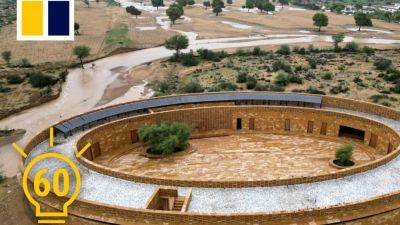In a single Delhi house, several hundred years of Indian history
Chandni Chowk was once the kind of neighborhood that people spoke about with awe.
Built in the 17th century by Emperor Shah Jahan, it reflected the wealth of the once mighty Mughal empire, quickly becoming one of India’s most desirable districts, where the rich and powerful resided in fashionable mansions.
Today, this corner of the historic walled city Old Delhi has a different vibe, attracting visitors to a lively street food scene. Architectural reminders of its former glory are still visible, but the swanky homes of the wealthy are no more, many converted to hotels or other businesses, their occupants long gone.
Not Ajay Parshed, though.
Aged 80 but still going strong, Parshed sits in the courtyard of his grand 120-room ancestral mansion, almost the last man standing of Chandni Chowk’s old guard, holding on to the splendor of a bygone age.
“It is the only living mansion on the historic street of Chandni Chowk,” says Parshed, a descendant of Chunna Mal, a moneylender and businessman who built the home way back, according to an inscribed golden slab inside the building’s hallway, in 1864.
Some 160 years later, although Parshed is clinging to his forebears’ legacy, much of the glamor of preceding centuries has vanished. Most of the mansion’s rooms are shuttered and unused. The antiques inside them are gathering dust.
Ajay Parshed sits in the courtyard of his grand 120-room ancestral haveli (traditional house).And out of Chunna Mal’s 32 heirs, only Parshed and his family of 10 remain. And, he says, he’s alone in wanting to keep the place.
“The family is planning to sell, but I am against it,” he says. “I have been trying to bring them on the same table.” Parshed says he’s hoping to ensure one of the only







